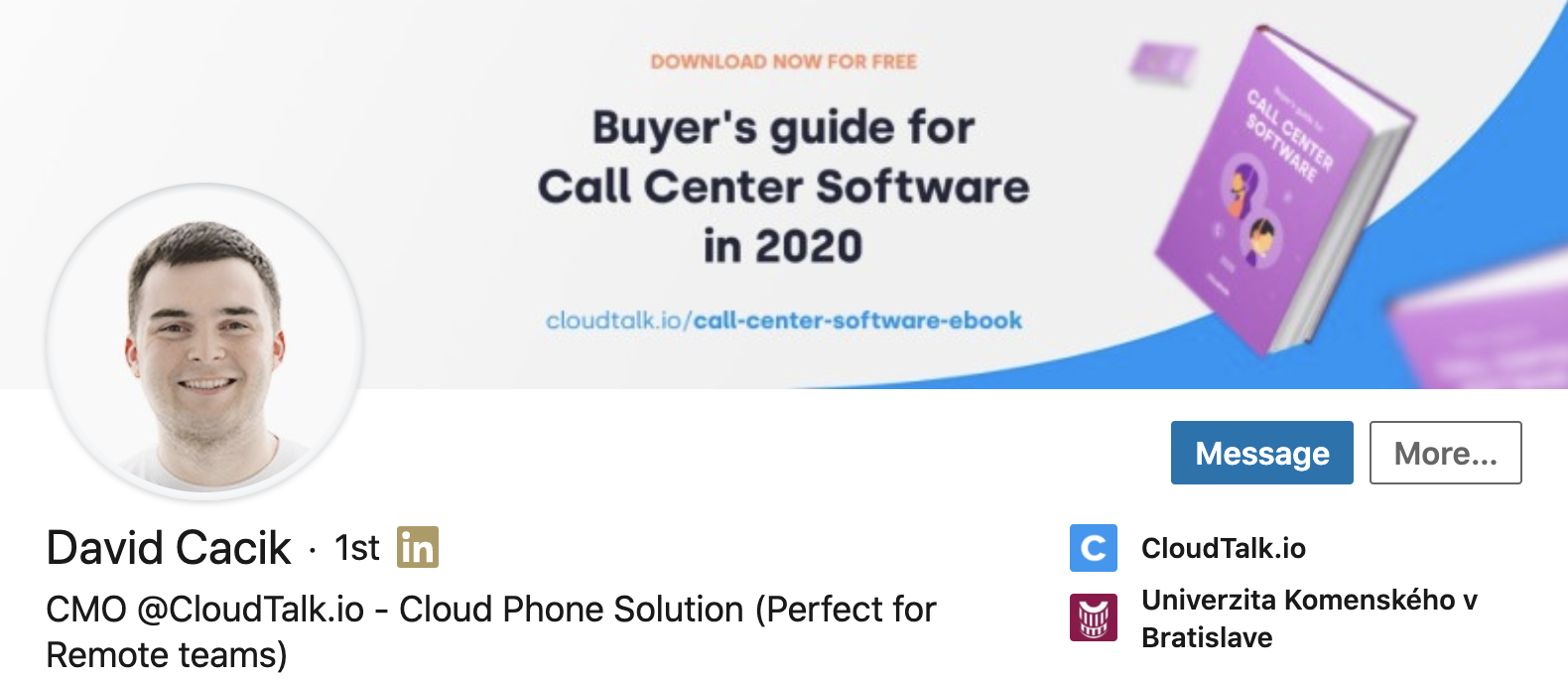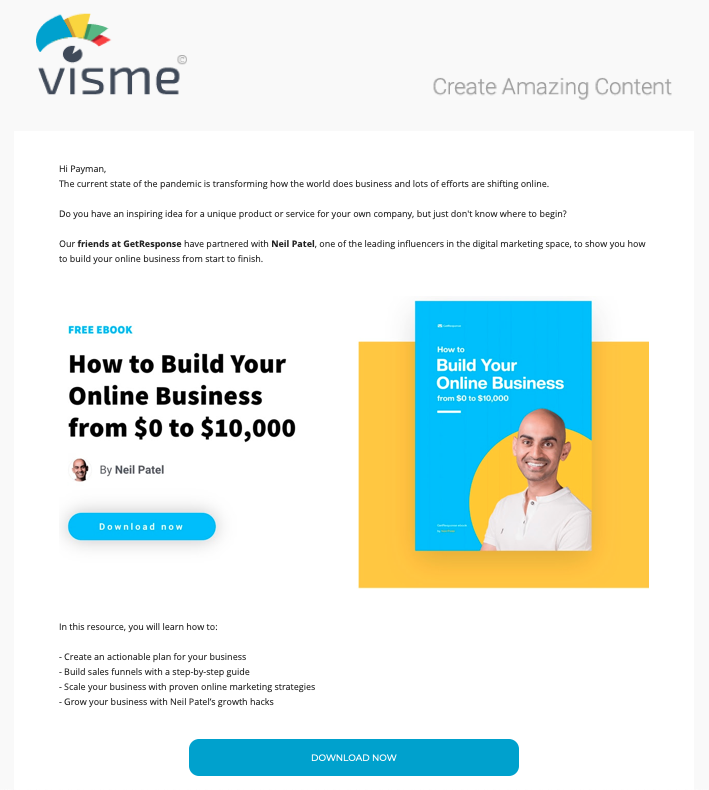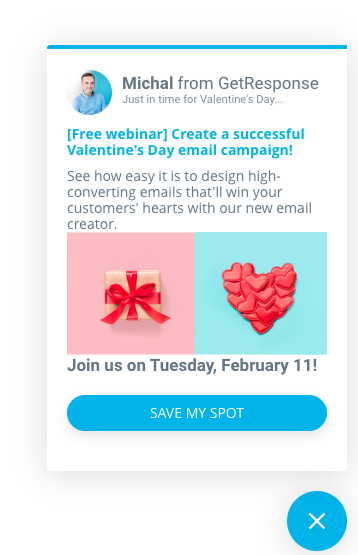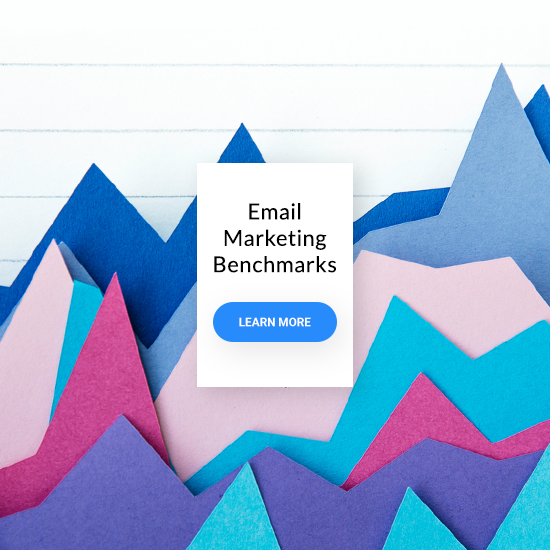Got your high-converting landing page and your best offer up and ready?
Perfect. Now all you need is to start driving high-quality traffic to them.
Not sure how?
Then keep reading.
In this guide, we’re sharing:
- 9 proven ways that’ll help you drive traffic to your landing pages
- Examples and tips on how to use them effectively
- Pros and cons of each of them
Ready? Here we go.
Quick recap:
A landing page is a simple webpage created with the sole purpose of convincing a visitor to perform a particular action – for example, a click-through, video view, or webform signup.
Landing pages usually feature only one offer and have a single call to action. Because they’re this focused, landing pages often have two-figure conversion rates. Want to learn more about creating landing pages? Read our quick guide on how to create a landing page efficiently.
A few words about GetResponse
GetResponse is a comprehensive online marketing platform for businesses of any size used by more than 350,000 customers all over the world.
Thanks to a wide number of built-in solutions — including landing pages, webinars, email marketing, Facebook Ads, and sales funnels — GetResponse offers everything you need to build and promote your landing pages.
Build your free landing page with GetResponse today »
Promote the landing page on your website
One of the quickest and easiest ways to drive traffic to your landing page – that’s also free – is to promote it on your website.
You can either promote it across your whole website or only feature it on selected high-traffic pages.
Here are a few ways you can do this:
- Add a pop-up form promoting the offer featured on your landing page that appears either after a user enters the page, scrolls through it, or wants to leave it
- Add a fixed bar promoting your offer to the top or bottom of your website
- Add banners promoting the offer inside of your blog articles related to the topic
- Add banners promoting the offer on your thank-you pages, e.g., after someone signs up for your newsletter
Here’s one example of how Smart Insights used a fixed bar to promote their RACE system on the company blog.

Pro tip: Write down all the pages where you’re promoting your landing page. In case you need to update the link or take down the page entirely, you’ll save yourself a lot of time and trouble.
Pros:
- Easy to implement
- You’ve got full control over it
Cons:
- Works only if you already have traffic on your website
- Reach limited to your existing traffic
Use organic social media
Another free method of driving traffic to your landing page is to promote it using organic social media.
Although it won’t get you as big results as the previous method, it’s still a good option especially if you don’t have a big email list or don’t want to invest in paid ads.
It can be particularly effective if you have a fairly large network of friends and followers who are ready to engage and share your posts.
Here’s what you can do:
- Update your cover photos to include the link and information about your offer
- Prepare a series of posts for your private profiles and your business pages that talk about some of the aspects your offer can help with
- Prepare a series of posts where you ask your audience a question related to your offer
- Do a live video for Facebook that talks about the topics related to your offer
- Record a similar video and post it on LinkedIn and Twitter
Here’s an example of how you could be promoting your content on your LinkedIn profile. Example from David Cacik of CloudTalk.io.

Pro tip:
If your target audience is very active on Pinterest, consider creating visuals that can be pinned, shared, and will contain the link to your website.
Pinterest has a very active and growing audience. Plus, graphics posted on Pinterest tend to rank high in Google.
Pros:
- Free
- You’ve got a fair amount of control over it
Cons:
- Limited reach
- Time-consuming
Additional reading:
How to Write Short Stories on Social Media for Better Clicks
Partner up with other brands
Here’s another quick win for you.
Find a partner brand with a similar target audience to yours. Then run a co-marketing campaign with them.
Here are a few ways you can do this:
- Promote each other’s landing pages through an email campaign
- Promote each other’s landing pages through social media
- Do a joint webinar where you’ll promote each other’s offers
What makes this tactic so interesting is that it is, essentially, free – provided that you and your partner agree to promote each other’s offers to a matching-sized audience.
At GetResponse, we’ve used this method and managed to attract more than 1,000 subscribers in a single day thanks to an email campaign sent out by our partner – Visme.
Below you’ll find the exact email they sent that generated such impressive results for us.

How to find a brand to partner with:
If you’re unsure where to find a partner that’s the right fit, consider reaching out to your existing audience. Ask them what other brands or pages they follow and get value from.
Alternatively, you can check what categories and pages your brand followers like on Facebook. To find this information, go to Audience Insights in the Facebook Ads Manager.
Pro tip:
Try not to use this method too often and only promote things that you know your audience will be interested in. You don’t want your subscribers to get tired or annoyed with your marketing communication.
Pros:
- Very quick results
- Essentially free
- Targeted audience
Cons:
- Can’t be used too often
- Works only if you manage to work out a deal with the partner brand
Engage on groups, forums, and Q&A sites
This is a simple one – be active where your target audience is.
There’s virtually a group for every kind of niche. It may be on Facebook, Quora, or maybe even Reddit – no matter where it is, use these sites to connect with your audience and build relationships.
But don’t go in there to place the link to your landing page in every other post – nobody likes that, and it’ll get you kicked out of the forum.
Instead, offer help and share content that’s relevant to the discussion.
Become an active member of the community and keep the links to a minimum (e.g., in your bio) and share them only when they’re relevant.
Another way to go about this is to create an awesome piece of content (that has a link to your offer in it) and ask if anyone wants to get direct access to it.
When people raise their hands, message them directly and send them the content you’ve promised.
This a common tactic you’ll often see in Facebook groups and on LinkedIn.
Here’s an example from Jono Petrohilos from Fitness Education Online of what these posts usually look like:

And here’s an example from Yam Regev of Zest of what the follow-up message might look like:

Pros:
- Free
- Targeted audience
Cons:
- Limited reach
- Time-consuming
- If poorly done it’ll be considered spam
Contribute to other publications, blogs, webinars, and podcasts
This one isn’t a quick-win kind of thing, but it can still generate excellent results.
If you’ve already got an established brand, consider becoming a contributor and appear on other people’s podcasts, webinars, and blogs.
This way, you’ll reach other brands’ audiences and you’ll attract people to your website.
The cost? Often none. All you need to do is provide value to their audience and help spread the word about the event.
In some cases, you’ll also be able to get a link to your landing page in the show notes or the author’s bio.
Here’s a screenshot from Ann Handley’s Total Annarchy newsletter that shows you this concept in action.

(Notice how many events she’s participating in?)
This a win-win scenario. The brand that hosts the podcast or the webinar gets free content from the expert (you), and you get the publicity and access to their audience.
And how do you find these opportunities? You can ask around in your network, search through your social groups, or use tools like Listen Notes, which is a search engine for podcasts.
How to get featured on other peoples’ blogs and podcasts:
There are two things you should do. First, start getting noticed by these brands. Comment on their content and be an active member of their communities.
Next, reach out to them and others in your network to see if they’d be interested in partnering up.
Here’s an example of an outreach message that we received on LinkedIn. We found it to be very relevant and subtle. Long story short, we started working together with Uscreen on a few interesting projects.

Pro tip:
If you’re an advanced user of a SaaS platform, check out if they wouldn’t be interested in working with you or featuring your testimonial. That’s also another win-win situation that doesn’t cost anything other than your time.
Pros:
- Free
Cons:
- Works only if you’ve already got a brand
- Time-consuming
Additional reading:
Run a paid ad campaign
Paid ads have two major benefits: 1) they bring very quick results, and 2) their reach is pretty much unlimited.
The downside? They’re not free.
If you haven’t run paid ads on Facebook or Google yet, the most important thing you should remember is that they’re an investment – an investment that generates a return.
When setting up your ads, you need to pay attention to how much it costs you to acquire new leads, and what percentage of them end up converting.
Only by knowing these numbers, you’ll be able to see whether you have a positive ROAS (return on ad spend).
In the beginning, this may seem like a tough process. But all it takes is a budget of even $50 to test several different tactics, see how the Facebook mechanisms work, and observe what results you can expect.
To get started, consider these ideas:
- Create a retargeting campaign on Facebook or Google targeting people who visited your website in the last 28 days, but haven’t converted
- Create a retargeting campaign on Facebook or Google targeting people who visited your landing page in the last 7 days, but haven’t converted
- If you have an existing audience (e.g., customers, people who registered for one of your offers) start by creating a Lookalike Audience (Facebook) or Similar Audience (Google) and target people who are similar to them
- Create a custom audience on Facebook based on your chosen criteria (e.g., their interests, industry they’re in, their role in a company, location)
- Create a custom audience on Google based on a list of URLs your audience might be interested in — these could even be your competitors’ pages
Here are a couple of ads we saw recently and thought they worked particularly well:


Keep in mind that not all ads need to lead people onto your landing page directly.
If you’ve got content like articles, videos, ebooks, or webinars you can start by targeting a very broad audience and maximizing your reach.
After showing several of your content pieces to the same group of people, you can target the most-engaged ones with an ad that’s aimed to generate conversions or to initiate the check-out process.
This way you’ll be able to present your offer to leads who already have some kind of relationship with you and are more likely to convert.
Pro tip:
If you’re new to Facebook ads and want to maximize your ROAS start by setting up your retargeting ads first. This way you’ll focus on the leads that have the highest potential to convert (e.g. people who visited your page within 7 days and haven’t bought yet) and are cheapest to acquire. While doing so, be sure to install the Facebook pixel and start feeding the Facebook algorithm with information that’ll help you optimize your ad campaigns in the future.
Pros:
- Very high reach
- Very quick results
Cons:
- It costs money
Additional reading:
- How to design Facebook Ads in GetResponse
- 13 Examples of Facebook Ecommerce Ads to Inspire Your Social Media Campaign
- Marketing funnel – definition, examples, and best practices
Case study: Discover how InfoShare Academy, a provider of programming courses for IT beginners, gained 1200 new contacts using Facebook Lead Ads and a carefully crafted ebook.
Send out an email to your audience
Not all landing pages are meant to generate new leads.
Sometimes, you’ll want to use a landing page to turn existing leads and convert them into paying customers. That’s where emails come in.
There are two main ways you can use them.
You can either manually send out an email campaign (or a few of them) and consider the job done. Or you can create an email drip campaign that’ll promote your offer multiple times.
The first one is quicker to run, but the latter tends to generate better results long-term.
Plus, no matter where or when a new lead joins your subscription, the drip campaign will automatically promote your offer to them.
Here’s an example of a drip email that we use to promote our content in GetResponse Resources. We only update these emails every few months and they continue to drive traffic to our pages even when we’re asleep:

Pros:
- Very easy to implement
- You’ve got full control over it
- Free if you’re already using an email marketing platform
Cons:
- Can only be used to target existing leads
Additional reading:
How to Plan and Send Your First Email Campaign
Double-down on content marketing
Content marketing is all about creating and promoting educational content that helps you build relationships and sell your products long-term.
If you create content that’s highly appreciated by your readers and is structured according to SEO best-practices, it’s likely going to attract a fair amount of organic traffic.
There are different types of content, including articles, ebooks, webinars, or podcasts.
So how can you take advantage of this, if you’re already producing great content?
One simple way is to promote your offer (and the landing page) inside of your content.
This way you’re achieving synergy where you’re both driving traffic to your content and converting that traffic into leads. Which is exactly what content marketing was built for.
Here’s how we’ve used a targeted pop-up to promote our webinar landing page inside of our high-traffic articles.

And here’s an example of how we promoted a few of our ebooks during our webinars on Marketing Automation.

Pro tip:
If you don’t have existing content that ranks well in the search engines, consider what content type to develop to get the best result with minimum effort. It may be more effective to focus on video (e.g. live streaming on Facebook, YouTube) as opposed to creating articles in a very competitive niche.
Pro tip 2:
To extend the shelf-life of your content, consider syndicating and repurposing it.
Content syndication is sharing your existing content on third-party platforms, like medium, growth-hackers, or reddit.
Content repurposing, on the other hand, is repackaging your content into a different format. For example, you could use your existing blog article and turn it into a video or an infographic that’d get a “second life” on Pinterest.
Both of these tactics can help you spread the word and attract more visitors to your website.
Pros:
- Very easy to implement
- Full control
Cons:
- Requires that you have existing content
- Time-consuming
Other popular methods
You may have noticed that we haven’t covered all of the popular methods of driving traffic to your landing pages.
We decided to focus on the most promising ones, the ones that you can apply even if you don’t have a massive marketing budget.
That said, we’d like to quickly talk about two tactics you’ll probably hear a lot on in the context of landing pages. These are search engine optimization (SEO) and solo ads.
Here’s what you should know about them.
SEO
While we’re big fans of SEO, there are times when you probably won’t focus on it too much. This is usually the case when you’re building landing pages for outbound traffic (e.g. from paid ads) or simply for a quick project (e.g. a one-time webinar event).
If, however, your landing page is meant to drive both inbound and outbound traffic – and your offer will be valid for many months – you’ll want to optimize them for SEO.
In the latter case, you’ll want to do an SEO research first and build your landing page according to your findings.
The structure, content, and the messaging of your page should be driven by what you’ll find around who your target audience is, what their search intent is, and what their pain points are. On top of that, the SEO market trends research may help you choose the best time to publish your page to match the time when public demand is highest.
Solo Ads
Online marketers often recommend solo ads as the #1 way to drive traffic to your landing pages. Based on our experience, that’s not something we’d advise.
The idea behind solo ads is that you pay the solo ad seller to promote your landing page to their email list. They charge you a certain amount of money and guarantee a specific number of clicks to your page.
The problem with this approach is that in many cases this traffic isn’t of good quality and you’ve got no control over who sees your offer. You may end up getting a lot of clicks or even signups, but you’ll most probably won’t get many sales. You won’t know whether they’re real users or not – and whether they’re even interested in the kind of product or service that you’re selling. It may also be that they’ve already received a similar offer multiple times before they saw your ad in their inbox.
You’re more than welcome to try this method, but it’s not something we’d do ourselves
Summary
Now that you know how you can drive traffic to your landing pages, it’s time to pick the methods you’ll want to focus on first.
You might not have the resources or time to use all of them right away. That’s why we decided to sum up the pros and cons of each method in the following table.
Also, we’ve prepared a matrix to help you visualize better where they stand in terms of potential impact vs cost (time + budget).


Get full access to all resources for FREE,
download them as PDF or read them online
- Pages: 23
- Chapters: 9
- Minutes read: 17




